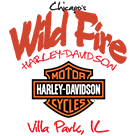Pre-Ride Checklist for Motorcycle Riders

Keeping your motorcycle in good shape is important for several reasons. A properly maintained bike will give you the best performance possible, making every ride that much more fun. It will also reduce the chances that you’ll have a mechanical problem that will leave you stranded far from home. Most importantly, proper motorcycle maintenance will keep you safer by making it less likely that you’ll have a serious mechanical problem as you ride, which can cause an accident. A daily pre-ride checklist is the first line of defense for keeping your bike properly maintained.
Below, we cover the essentials of the motorcycle checklist. Read on to learn how to keep your bike in good shape. Another helpful trick for maintaining your bike is to keep it on a regular maintenance schedule by bringing it to the professionals every few months. The team of skilled technicians at Wild Fire Harley-Davidson® will make sure you leave with your bike in the best riding condition possible. We’re located near Chicago, in Villa Park, Illinois.
Wheels & Tires
Wheels and tires are the foundation of your bike. You don’t want to have any problems with them, especially not at high speeds. The best place to start is by checking the air pressure of the tires. It’s important to check this out on a regular basis so you can notice if one tire is losing air pressure faster than the other. If it is, you might have a broken bead or a small hole letting air escape.
After checking the air pressure, inspect the tread and sidewalls of the tires. You shouldn’t see any bumps or irregularities in the shape of the tire. You also shouldn’t see bald spots, cracks, fissures, or obvious damage. If you see a foreign object stuck in the tread of your tire, it’s probably best to trailer your bike and take it into the shop to get fixed. It’s never a good idea to ride with an obviously damaged tire.
Chain, Belt & Shaft
Most bikes connect the engine to the rear wheel using either a belt, chain or driveshaft. For belt drives, make sure the belt is at the correct tension. You’ll also want to make sure the belt isn’t frayed or damaged. Then, take a look at the chain. Make sure it’s clean and lubricated. Occasionally you’ll need to give your chain a deep cleaning to remove built-up dirt and gunk. Driveshafts generally don’t require much maintenance but you might need to add some lubricant, so consult your owner’s manual for further guidance.
Lights
A light check is simple but important. Test all of the lights and make sure they’re bright, clear, and responsive to controls. If one isn’t working, it might be the result of a dead bulb, blown fuse, or other simple electrical problem.
Fluid Levels
Your bike uses several types of fluids for various cooling and lubrication tasks, and it’s important to keep all of these topped off. Check your engine oil first. You’ll want to make sure it’s at a decent level and you’ll also want to check out the quality of the oil. If it’s too sludgy or dark, you probably need to replace it.
Next, check out the transmission fluid and engine coolant. The process for checking these will vary from bike to bike, so consult your owner’s manual for further advice. Many bikes have two reservoirs for brake fluids. These might both be in the front or they might be located in the front and the rear of the bike.
Brakes, Clutch & Throttle
After you’ve checked the fluids, it’s time to make sure all the controls work correctly. Turn the bike on and then open up the throttle (make sure you’re in neutral gear!) Does the throttle get caught up and close slowly or does it close smoothly? If the throttle opens and closes smoothly without getting stuck, put the bike in gear. Feel the clutch as you do so, making sure that it’s easy to get the bike into gear and that the bike moves forward as soon as you let off the clutch. At a low speed, make sure the brakes are functioning properly.
